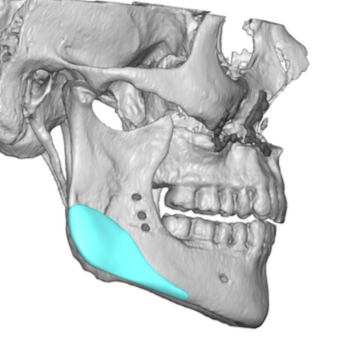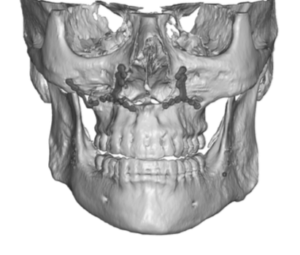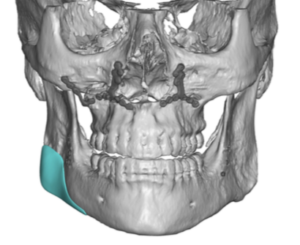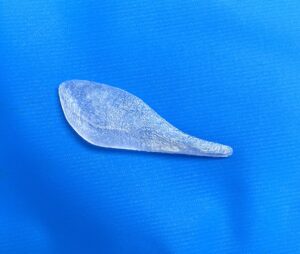Background: Asymmetry of any paired facial bony structure is not uncommon including the jaw angles. The jaw angles create the width of the lower face in the front view and the slope of the mandibular plane angle in the side view. Because of their bilateral protruding (or lack of protrusion) nature it is fairly easy to see when jaw angle asymmetry exists. While many people have some degree of bony jaw angle asymmetry, which I see all the time in 3D CT scans for any type of custom facial implant design, certain jaw surgery procedures can either create it or magnify its pre-existence.
The sagittal split ramus osteotomy (SSRO) of the mandibular ramus is the most common surgical procedure that can create jaw angle asymmetries. Splitting the bony jaw angle sagittally, moving the distal tooth bearing bone section (typically forward) and then putting the two jaw angle segments back together of both sides creates the ideal opportunity to unknowingly create shape differences between the two sides. Changes in the bony jaw angle shape cm also occur due to bone resorption with partial devascularization of the bone or from the placement of protruding hardware.
In attempting to correct jaw angle asymmetry after an SSRO has well healed (6 to 12 months later), a 3D CT scan should he done for an accurate evaluation. Panorex and cephalometric x-rays are 2D imaging studies that do not provide an adequate detailed assessment of the bony anatomy of the jaw angles. In addition trying to guess or eyeball how to fix it from an external assessment with standard jaw angle implants is a recipe for just creating a different asymmetry problem. As a general rule it is always good to remember one of the many basic rules in plastic surgery…’the smaller the problem is the more precise the surgery for it must usually be’.


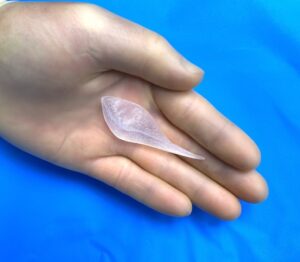
It is hard enough with using a custom implant design and then getting the implant in the designed position to adequately correct jaw angle bony asymmetry. I would not think of doing so with any realistic hope using a standard implant with getting a comparative result.
Case Highlights:
1) Noticeable jaw angle asymmetry can occur after sagittal split mandibular osteotomies corrective surgery.
2) The nature of jaw angle asymmetries after surgical manipulation should be first evaluated with a 3D CT scan to appreciate the exact dimensions of the bony asymmetry.
3) A custom jaw angle implant design is the most precise method to try and obtain improved symmetry between the two sides with attention paid to the risk of overcorrection.
Dr. Barry Eppley
Indianapolis, Indiana

